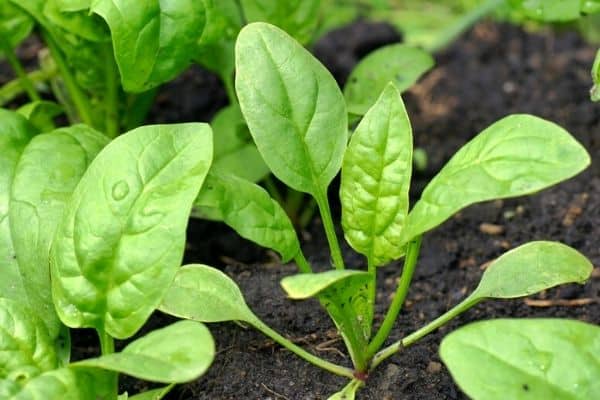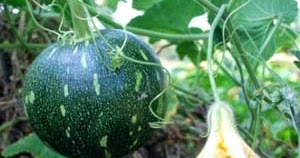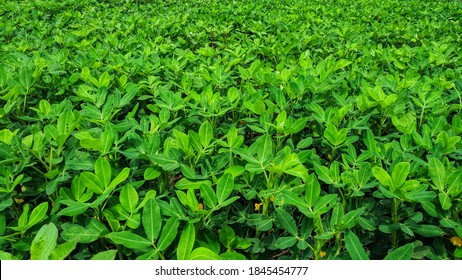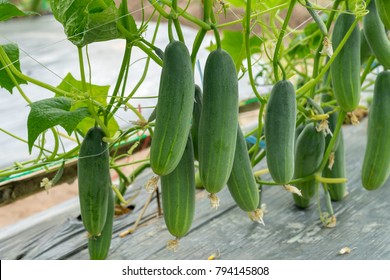
30 types of crops based on agronomic practices
The classification of crops based on agronomic practices is given below:

1. Catch crop/emergency crop/contingent crop:
The crop is cultivated to catch the forthcoming season. It replaces the main crop that has failed due to biotic or climatic, or management hazards and utilizes the remaining period of the season. It provides livestock feed at a difficult time of year, checks weed growth, conserves soil, and uses added fertilizer and moisture. Such crop is generally of very short duration, quick-growing, fast bulking, harvestable or usable at any time of their field duration, and adaptable to the season, soil, and cultural practices, for instance, green gram, black gram, cowpea, spinach, radish, coriander, onion, etc.
2. Restorative crop:
The crop provides a good harvest and enrichment or restoration or amelioration of the soil, such as legume. It fixes atmospheric nitrogen in root nodules, sheds their leaves during ripening, and restores soil conditions.
3. Exhaustive crop:
The growing crop leaves the field exhausted because of a more aggressive nature, such as sesame, brinjal, and linseed.

4. Relay crop:
The crop plant is sown a few days or weeks before harvesting the standing mature crop in multiple cropping. The crop is grown on residual moisture without preparatory tillage, for instance, black gram in aus paddy, grass pea in anzan paddy, sweet gourd in potato.

5. Smother crop:
The crop plant which can smother or suppress the population and growth of weeds by providing suffocation curtailing the movement of air) and obscuration (of the incidental radiation) by its dense foliage developed due to quick-growing ability with heavy tillering or branching, planophyllic or procumbent or trailing habits, for instance, barley, mustard, cow-pea, sweet gourd.

6. Cover crop:
The crop plant can protect the soil surface from erosion (wind, water, or both) through its ground-covering foliage and/or root mats: for instance, groundnut, marvel grass, black gram, rice bean, grass pea, sweet potato, para grass.

7. Nurse crop:
The crop plant helps nourish other crops by providing shade and acting as climbing sticks such as Jowar in cow-pea. Leguminous or deciduous plants shed their leaves and enrich the surface soil for better growth of the crops grown underneath. Shade-loving plants (sciophytes) such as turmeric, ginger, and corm are nourished by tall crops such as pigeon pea, castor, and climbing vegetables such as cucumber, ash gourd, and bean.
8. Guard or barrier crop:
The crop plant helps protect another crop from trespassing or restrict the speed of the wind and thus crop damage such as safflower in gram.
9. Brake crop:
The crop is grown to break the continuity of the agro-ecological situation of the field under multiple cropping systems. The inclusion of such crop in the cropping system helps to reduce the inoculum of soil-borne harmful biotic agents such as weeds, pests, pathogens, and parasites and improves soil conditions for crop growth. Growing potato, pulses, or oilseeds in continuous cereal cropping systems, for instance, rice-rice, rice-wheat, rice-maize, breaks the continuity of many pests due to variations in host ranges changing of agro-ecological situations. Brake crop is also used to designate guard crop, particularly the one that helps break the wind speed and protect other crop plants from wind hazards.
10. Trap crop:
The crop plant grew to trap soil-borne harmful biotic agents such as parasitic weeds, Orobanche, and Striga trapped by Solanaceous and sorghum crops, respectively. These weed seeds germinate when they come in contact with the roots of these crop plants. After that, the destruction of these crops reduces the inoculum of such parasitic weeds. Similarly, nematodes are trapped by some Solanaceous crops. On uprooting crop plants, nematodes are pulled out from the field soil.
11. Mulch crop:
The crop plant grew to conserve soil moisture from the bare ground by its thick and multilayered foliage, trailing habit, and sometimes, self-seeding nature, for instance, cowpea.
12. Sod or turf crop:
The crop plant that belongs to the grass family and has sod-type tillers with matted foliage and roots close to the soil surface is grown to conserve soil from erosion, particularly in non-arable areas, for instance, marvel grass, Digitaria sanguinalis, Cynodon dactylon.
13. Cleaning crop:
The crop plant whose agronomic practices makes the field clean from weeds and stubble, for instance, potato, groundnut, ginger, turmeric, and colocasia, which require considerable earthwork such as earthing up, preparation of irrigation and drainage channels, placement of top-dressed fertilizers, and harvesting by digging which helps to disturb the soil surface, the site of weed growth.
14. Fouling crop:
The crop plant whose cultural practices allow the infestation of weeds intensively, for instance, maize, cotton, and direct-seeded upland rice, have low coverage over the ground at their earlier stages of growth and wider spacing and slow growth at the beginning.
15. Cash crop:
The crop plant is grown for sale to earn hard cash. The processing of such a crop after harvest is beyond the means of individual farmers, for instance, jute, tobacco, cotton, and sugar cane.
16. Silage crop:
The crop plant grew to preserve in pits (silo pits) in a succulent condition by natural fermentation or acidification for feeding livestock during lean months or off-seasons: for instance, maize, cowpea, jowar, bajra, and berseem.
17. Soiling crop:
The crop plant grew to harvest while it is still green and fed fresh to livestock installs, for instance, berseem, oats, cow-pea, Napier, rice, and bean.
18. Green manuring crop:
The crop plant grew to be incorporated into the soil fresh to increase the soil fertility. Green manuring may be green leaf manuring or green manuring in situ, such as dhaincha, sunnhernp, Gliricidia.
19. Mixed crop:
Two or more crops are grown simultaneously in the same field without preserving their identity concerning field area. They may be harvested together or separately, for instance: wheat+mustard, gram+safflower, maize+cow pea, jowar+cow pea, linseed+mustard, berseem+mustard. Seeds of these crops may be mixed together before sowing and broadcasted irregularly or drilled in rows or maybe sown at the same time and grown with the same management practices.
20. Intercrop:
Two or more crops are grown simultaneously in alternate rows in the same field. Such crops are not necessarily sown simultaneously, and their harvest times may be quite different. Still, they are usually simultaneous for a significant part of their growing periods. These crops are grown with the same agronomic practices without separate identities except for the respective rows. There is one main crop while the others are subsidiary crops, such as sesame-i black gram, pigeon pea+groundnut, sorghum+pigeoil wheat+mustard, rice+pigeon pea, berseem+ mustard.
21. Companion crop:
In intercropping, when subsidiary crops are usually of a shorter duration in a long duration main crop, i.e., the main crop gets the company of a short duration crop for a certain period at the early stages of its growth, for instance, potato, onion, and spinach in autumn planted sugar cane, lady’s finger and amaranths in spring-planted sugarcane; radish in potato; cow-pea, rice bean, green gram in Napier.
22. Parallel crop:
Two or more crops grown simultaneously but do not have inter-competitive effects, i.e., they are parallel for competition, for instance, maize+cow pea, sorghum+pigeon pea.
23. Ratoon crop:
It is also called stubble crop or coppice or providence or regenerated or second or third-cycle crop. In perennial or multi-cut crop plants, it refers to the subsequent harvests taken from the regrowth of the rootstocks, stubble, and stumps after the first harvest, such as sugar cane, napier, berseem, rice, jowar, bajra, oats, guinea grass, and rice bean. Such crops reduce the cost of cultivation, do not need seed and sowing, reduce the crop cycle period, produce a higher yield per unit time, and often require less input.
24. Seed crop:
The crop plant is grown for seed production (generative yield), for instance, the seed crop of jute, cabbage, cauliflower; potato, tobacco, oats, berseem, cowpea, and maize. Such crops require special care and management to maintain the crop variety’s satisfactory genetic identity and purity (agro-ecotype) and a healthy crop.
25. Leaf crop:
The crop plant grew to harvest leaves for economic yield, for instance, tobacco.
26. Fuel crop:
The crop plant is grown to obtain firewood or solid fuel as a byproduct and its economic yield, for instance, jute, sugar cane, pigeon pea, cotton, mustard, and sesame.
27. Energy crop:
The crop plant grown to obtain liquid energy such as ethanol and alcohol, for instance, sugarcane, potato, maize, etc., is used for fermentation and distillation.
28. Contour crop:
The crop plant grown on or along the contour lines protects the land from erosion, for instance, marvel grass and Setaria.
29. Augmenting crop:
When sub crops are sown to supplement the yield of the main crops, the sub crops are known as augmenting crops, for instance, mustard with berseem, Chinese cabbage with mustard. Here the mustard or cabbage helps get a higher yield of fodder even though berseem gives a poor yield in the first cutting.
30. Alley crop:
When arable crops are grown in alleys formed by trees or shrubs, established mainly to hasten soil fertility restoration, enhance soil productivity and reduce soil erosion, they are known as alley crops. Such crops should have slight shade tolerance and should be non-trailing, for instance, sweet potato, black grant, turmeric, and ginger in between the rows of Eucalyptus.